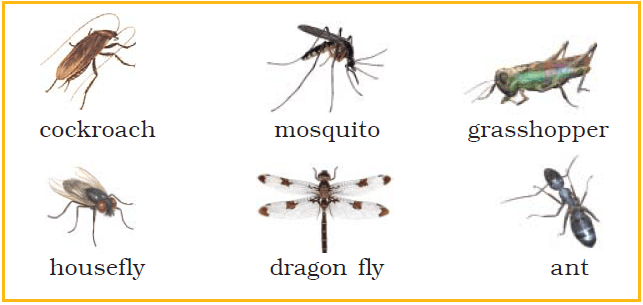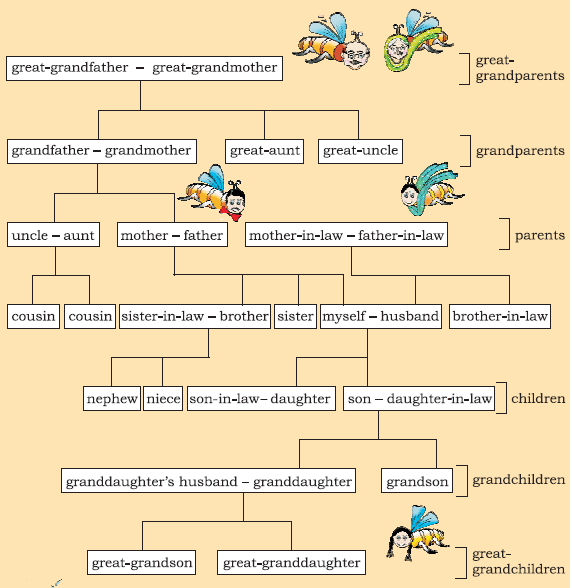NCERT Solutions for Class 7 English Honeycomb Chapter 7 The Invention of Vita-Wonk is available here. These solutions are prepared by our subject expert to help students in their exams and homework. NCERT Solutions for Class 7 English Chapter 7 The Invention of Vita-Wonk questions and answers are very helpful for CBSE exam. Students of Class 7 can study the answers provided here to score well in their school exams.
Comprehension Check
Question 1: Choose the right answer.
(i) Mr Willy Wonka is
(a) a cook,
(b) an inventor,
(c) a manager.
Answer: (b) an inventor
(ii) Wonka-Vite makes people
(a) older
(b) younger.
Answer: (b) younger.
(iii) Mr Wonka wants to invent a new thing which will make people
(a) younger
(b) older
Answer: (b) older
Question 2: Can anyone’s age be a minus number? What does “minus 87” mean?
Answer: No, no one’s age can be a minus number. Here, “minus 87” means that the person had to wait eighty-seven years before he could come back. He had taken a strong dose of Wonka-Vite and had therefore, disappeared.
Question 3: Mr Wonka begins by asking himself two questions. What are they?
(i) What is ______________________ ?
(ii) What lives ______________________
Answer: (i) What is the oldest living thing in the world?
(ii) What lives longer than anything else?
Working with the Text
Question 1: (i) What trees does Mr Wonka mention? Which tree does he say lives the longest?
(ii) How long does this tree live? Where can you find it?
Answer: (i) The trees that Mr Wonka mentioned are the Douglas fir, the oak, and the cedar. He said that a tree called Bristlecone pine lives the longest.
(ii) This tree lives for over 4000 years. It can be found upon the slopes of Wheeler Peak in Nevada, U.S.A.
Question 2: How many of the oldest living things can you remember from Mr Wonka’s list? (Don’t look back at the story!) Do you think all these things really exist, or are some of them purely imaginary?
Answer: Mr Wonka mentions many of the oldest things. Some of these things do not really exist. These are purely imaginary. He says he collected a pint of sap from a 4000-year-old Bristlecone pine. He mentions a list of many things like the toe-nail clippings of a 168-year-old Russian farmer, an egg of a 200-year-old tortoise, the tail of a 51-year-old horse in Arabia, the whiskers of a 36-year-old cat called Crumpets, an old flea, the tail of a 207-year-old giant rat from Tibet.
Question 3: Why does Mr Wonka collect items trom the oldest things? Do you think this is the right way to begin his invention?
Answer: Mr Wonka collected items from the oldest things because he wanted to create age; he wanted to invent something that would make people older. It was probably the right way to begin his invention as he wanted to make people older and therefore, the use of old things seems appropriate.
Question 4: What happens to the volunteer who swallows four drops of the new invention? What is the name of the invention?
Answer: The moment the twenty-year-old volunteer swallowed four drops of the new invention, he began wrinkling and shrivelling up all over. His hair started dropping off and his teeth started falling out. Before Mr Wonka knew it, the volunteer had suddenly become an old man of seventy-five. The name of the invention was Vita-Wonk.
Working with Language
Question 1: What do you call these insects in your language?

How do these insects effect your health? Have a discussion in the class
Answer: Answer it yourself.
Question 2: Fill in the blanks in the recipe given below with words from the box.
| shred cooker times tomatoes half onion oil |
Easy Palak–Dal
INGREDIENTS
• One ___________
• One cup dal
• Two thin green chillies
• ___________ a teaspoon red chilli powder
• Eight small bunches of palak
• Two ___________
• Salt to taste
Wash and cut the vegetables: ___________ the palak. Put everything in a pressure___________. Let the cooker whistle three ___________, then switch it off. Fry a few cumin seeds in ___________and add to the palak–dal.
Answer: Ingredients
- One onion
- One cup da
- Two thin green chillies
- Half a teaspoon red chilli powder
- Eight small bunches of palak
- Two tomatoes
- Salt to taste
Wash and cut the vegetables: shred the palak. Put everything in a pressure cooker. Let the cooker whistle three times, then switch it off. Fry a few cumin seeds in oil and add to the palak-dal.
Question 3: A ‘family tree’ is a diagram that shows the relationship between the different members of a family. Fill in the family tree below with names, ages, and other details you think are relevant (you may even stick photographs, if you have them). Put your family trees up in the class.

Answer: Do it yourself.
Speaking
Question 1: Using Do for Emphasis Charlie asks, “What did happen?”
This is a way of asking question “ What happened?” with emphasis.
Given below are a few emphatic utterances. Say them to your partner. Let your partner repeat your utterance without the emphasis. Your partner may also add something to show she/he disagrees with you.
YOU: I did study.
PARTNER: You studied I don’t believe Look at your MARKS!
YOU: I did go there.
PARTNER: You went there? Then……………..
YOU: I do play games.
PARTNER: …………..
YOU: He does read his books.
PARTNER: ………….
YOU: You do say the most unbelievable things!
PARTNER: …………..
YOU: The Earth does spin around.
PARTNER: ………….
YOU: We all do want you to come with us.
PARTNER: ………….
YOU: Who does know how to cook?
PARTNER: …………
YOU: I do believe that man is a thief.
PARTNER: ……………..
Answer:
YOU: I did study.
PARTNER: You studied I don’t believe you. Look at your marks!
YOU: I did go there.
PARTNER: You went there? Then how come I didn’t see you?
YOU: I do play games.
PARTNER: You play games? Then why don’t you take part in Sports Day?
YOU: He does read his books.
PARTNER: I don’t think so, because he couldn’t answer my questions.
YOU: You do say the most unbelievable things!
PARTNER: What makes you think so?
YOU: The Earth does spin around.
PARTNER: It spins? Then why don’t I feel that?
YOU: We all do want you to come with us.
PARTNER: Is it? Then why no one invited me?
YOU: Who does know how to cook?
PARTNER: Not sure, but I don’t know.
YOU: I do believe that man is a thief
PARTNER: It is hard to believe because he looks so innocent.
Writing
Question 1: (i) Make a list of the trees Mr Wonka mentions. Where do these trees grow? Try to find out from an encyclopaedia. Write a short paragraph about two or three of these trees.
Answer: Mr Wonka mentioned the name of the following trees
(a) Douglas Fir
(b) Oak
(c) Cedar
(d) Bristlecone Pine
Douglas fir is found in coastal regions from west-central British Columbia southward to central California.
Oak is found in cool temperate to tropical latitudes in Asia and the America.
We can find Cedar in the mountains of the western Himalaya and the Mediterranean region.
Bristlecone Pines are found in higher mountains of the southwest United States. There are such bristlecone pine trees which are over 4000 years old.
(ii) Name some large trees commonly found in your area. Find out something about them (How old are they? Who planted them? Do birds eat their fruits), and write two or three sentences about each of them.
Answer: Some of the commonly found trees in our area include eucalyptus, mango, neem, pipal and banyan trees. Eucalyptus trees are very tall in structure. They have medicinal properties and are available in large number in our area.
Mango trees are generally planted in houses for their use in religious purpose. It is also planted in large numbers for the fruit. Neem is found in houses as well as parks.
They have medicinal properties and is widely scattered all across the sour area.
Pipal and banyan trees are mostly found in temples. They are worshipped by Hindus. Some of these trees are over 100 years old.
Question 2: Find out something interesting about age or growing old and write a paragraph about it. Following are a few topics as suggested as examples.
- The age profile of a country’s population- does it have more young people than old people or vice versa? What are the consequences of this?
- How can we tell how old a tree, a horse, or a rock is?
- What is the ‘life expectancy’ of various living things and various population (how long can they reasonably expect to live)?
Answer: All living beings start ageing from the moment they are born. The best part with the process of growing old is that we are able to witness many changes. India is one of the most populous nations in the world. In India we have more of youth population than old people.
It increases the productivity and earning capacity in the society. We can guess the age of a tree by counting the rings in its trunk. The age of rock and horse can be identified by carbon dating process. Microorganisms have the shortest life cycle.
Insects too live a short life. Animals like elephant and tortoise live more than 100 years. Life expectancy of human is around 85 years.